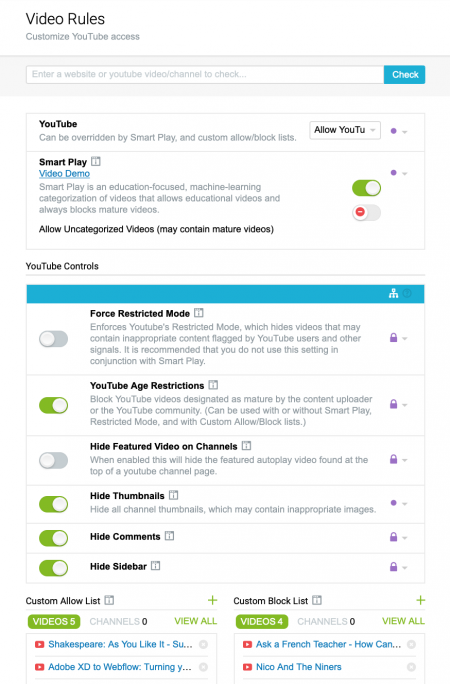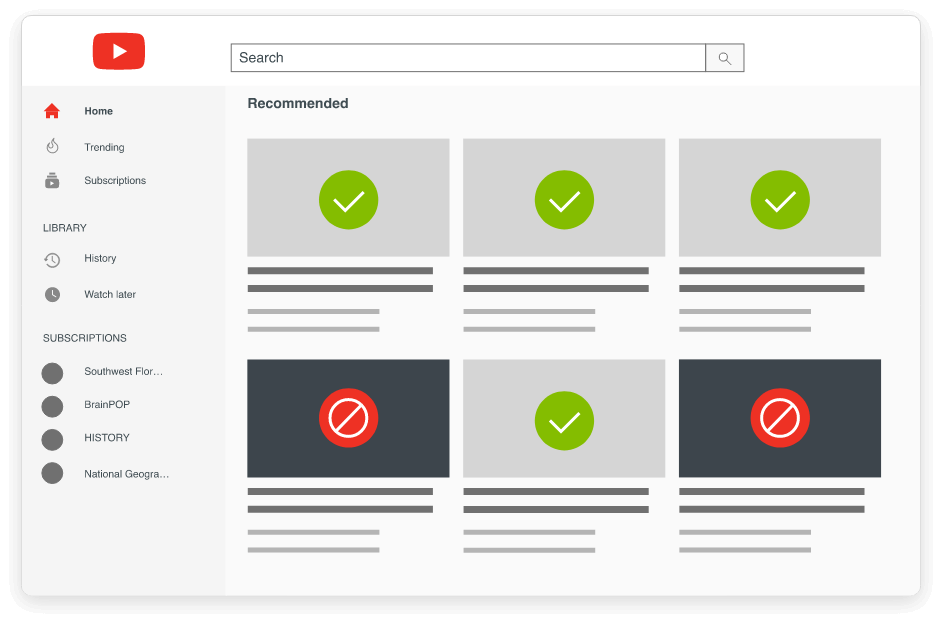Is It Safe?: Safe YouTube for remote learning
With classrooms closed and remote learning the new normal for billions of students around the world, methods for delivering instruction are changing. The use of video conferencing, live streaming, and recorded videos are on the rise.
But is the growing use of YouTube for distance learning safe for students?
Teachers record themselves lecturing; upload that recording to their YouTube channel; share with students. It’s simple, right? Actually, it’s not simple at all.
For years, YouTube has been the most challenging site for schools to keep safe and appropriate. Its increased use, and from home, only exacerbates the dangers of YouTube — if appropriate steps aren’t taken with a web filtering solution that includes advanced video controls.
1. Comments should be blocked
The comments on YouTube videos are so rife with vulgarity, bullying, and predatory behavior that Alphabet company was forced to disable comments on videos featuring minors. That’s a start, but with students viewing more videos, schools need to go farther: disable comments on ALL videos and keep the discussions about instruction in safer locations, such as your LMS.
2. Sidebar and recommended videos should be blocked
Much has been written about the way YouTube algorithms serve up one video after the next, taking a viewer into a rabbit hole of increasingly radicalizing and dangerous content. Block sidebar and recommended videos to keep students focused on the curriculum given.
3. Age controls should be used
YouTube provides age controls that can help prevent access to adult and inappropriate content. A more comprehensive approved is recommended (see #4 below) but this is a good base setting.
4. Consider controls or limits by time of day
So students are learning online through the day, watching videos, receiving instruction, completing coursework. What happens at midnight? For many students, the school device they now have at home is their first device. Schools can help keep those late-night hours safe by blocking YouTube or turning off internet access overnight.
5. Block adult content
This seems like it should be easy; it’s not. Video uploaders are responsible for choosing the category and audience for their videos; this system is prone to error – both unintentional and malicious. The quantity of content added to YouTube every minute makes it impossible for moderators to review, and some users are actively working to game the automated review systems. YouTube age restrictions are a start – but is far from comprehensive. YouTube Restricted Mode goes farther – but is notoriously difficult to customize with teacher and district content.
6. Ensure access to teacher and district channels
Certainly, teachers will be using Khan Academy and other popular channels for instruction. But they’ll also be creating and uploading their own videos to continue delivering relevant and personalized lessons to students. Schools need a solution that allows you to allow custom lists of videos and channels. This can be challenging when using only YouTube restricted mode.
7. Report on access
Finally, like with most things, the best way to determine if YouTube controls are working is with data. Make sure you’re able to see reports on what videos are being watched, by whom, and when.

A solution to Safe YouTube for Remote Learning? Lightspeed Filter™
Lightspeed Filter works anytime, anywhere – making it the perfect solution for safe remote learning.
Plus it includes advanced video rules and our proprietary Smart Play solution, making it easy for schools to provide safe and customizable access to YouTube. With Lightspeed Filter video rules, schools can:
- Turn YouTube access on and off
- Block comments
- Block sidebars
- Enable age restrictions
- Enable YouTube Restricted Mode
- Hide video thumbnails
- Turn on Smart Play for access to only educational videos and custom
- channels
- Easily add district and teacher videos and channels to custom allow or blocklists
- Differentiate YouTube settings for different groups, grades, schools
- Set different YouTube policies by time of day
Only Lightspeed Filter can provide the YouTube protections schools need across platforms – thanks to Smart Play and Smart Agents. Smart Play uses our proprietary categorization engine to allow only appropriate, educational YouTube videos and block the rest in a single click. And our patent-pending Smart Agents installed on devices include a trusted man-in-the-middle proxy system to easily give schools the granular controls and reports that used to only come from complicated proxy, PAC file, and certificate management.
The result? Safe, managed access to YouTube for distance learning and remote instruction — in easy one-click controls.

